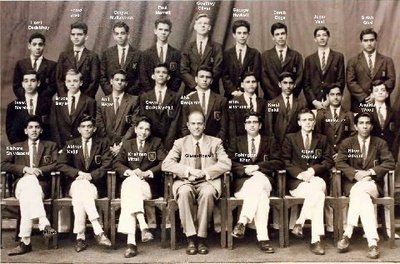Ranko Ivancevic
Teacher of English as a foreign language ("Whatever you want to teach, be brief")
Monday, April 03, 2006
Sunday, April 02, 2006
Ganesh

Ganesh is the Hindu elephant-headed god, Ganesha (or Ganesh) is known (by various names in different parts of India and on different occasions) as the Remover of Obstacles, the god of domestic harmony and of success. He is the most beloved and revered of all the Hindu gods, and is always invoked first in any Hindu ceremony or festival. He is the son of Parvati (the wife of Shiva, the Destroyer, the most powerful of the Hindu trinity of principal gods). There are many stories about how Ganesha got his elephant head, and about his exploits and antics. He was created as an ordinary boy, but was decapitated in battle. Shiva's emissaries were sent into the forest and told to get the head of the first animal they found and to fit that head onto the boy's neck. They found a little elephant, and it worked!
Heroes of epics like the Mahabharata and the Ramayana are immortalized and are still alive in the day-to-day existence of the common people. The gods of Hinduism are at once super-human and human and there is distinct feeling of warmth and familiarity towards them. Rama, the hero of the Ramayana, represents qualities such as honor, courage and valor and is held up as a model of manliness. His wife Sita is the prototypal Indian wife who is carried off by Ravana, the king of Lanka, while Rama and Sita are on exile. Sita's eventual rescue by Rama, his brother Lakshmana, and Rama's faithful monkey-general Hanuman are all woven into this engrossing tale. Stories from this epic have been passed down orally from one generation to the next. Religious fairs, festivals and rituals have kept these legends alive, and there is never an occasion that does not offer an opportunity to retell the old stories.
The stirring verses of the Mahabharata tell the story of the dynastic struggle between the Pandavas and the Kauravas, who were close cousins. Lord Krishna plays a very important role in this Great Epic. He is a friend, philosopher and guide to Arjuna, one of the Pandavas, and he helps Arjuna overcome his hesitation to kill his close relatives in the battlefield. The wise philosophy of Krishna and his teachings have been embodied in the Bhagwad Gita. Although the popular image of Krishna is that of a god who steals butter as a child, and who, as a youth, plays the flute and entices cows and cowherd girls alike; in his mature years he is depicted as the wise philosopher with a more serious side to his nature.
There are numerous gods and goddesses worshipped by Hindus all over India. Among these, the most fundamental to Hinduism, is the trinity of Brahma, Vishnu and Shiva - creator, preserver and destroyer respectively. Brahma has four heads corresponding to the four directions of the compass. He is the creator of life and the entire universe. Vishnu is the preserver who guides the cycle of birth and rebirth. He is also supposed to have taken many incarnations to save the world from evil forces. Both Rama and Krishna are believed to have been incarnations of Vishnu. Shiva, usually seen with a coiled cobra around his neck, destroys all evil and also has many incarnations, not all of which are terrifying.
The invisible deities are represented by a complexity of images and idols symbolizing divine powers. Many of these idols are housed within ornate temples of unparalleled beauty and grandeur. The Hindu gods are very much alive and live in temples, snow-capped peaks, in rivers and oceans and in the very hearts and minds of the Hindus.


